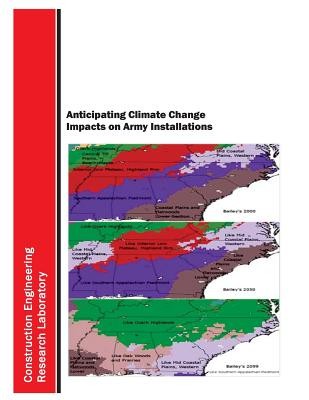
- We will send in 10–14 business days.
- Author: U S Army Corps of Engineers
- Publisher: CreateSpace Independent Publishing Platform
- Year: 2014
- Pages: 138
- ISBN-10: 1502961997
- ISBN-13: 9781502961990
- Format: 21.6 x 27.9 x 0.8 cm, softcover
- Language: English
- SAVE -10% with code: EXTRA
Anticipating Climate Change Impacts on Army Installations (e-book) (used book) | bookbook.eu
Reviews
Description
Military installations must be maintained and managed to provide appropriate training and testing opportunities. As climate changes, natural habitat areas on installations may shift and change the costs to maintain training and testing areas. Habitat is important for: (1) its ability to support training and testing and (2) its capacity to meet Federal requirements regarding the maintenance of listed threatened and endangered species. That capacity can change due to shifts in weather patterns, flooding, drought potential, and annual temperature patterns. With substantial change, species can be directly affected by invasive species, loss and fragmentation of habitat, or increased disease and predation. Population losses for these species can result in loss of training lands and/or time. Additionally, it is very likely that climate change will cause changes in erosion patterns and intensity, which will also directly affect training missions. This report explores how results from Global Climate Models (GCMs) can be used to forecast potential challenges to habitats and species while also estimating potential impacts on erosion at each of approximately 130 Continental United States (CONUS) installations. The report concludes with recommendations on how to adapt to these projected changes.
- Author: U S Army Corps of Engineers
- Publisher: CreateSpace Independent Publishing Platform
- Year: 2014
- Pages: 138
- ISBN-10: 1502961997
- ISBN-13: 9781502961990
- Format: 21.6 x 27.9 x 0.8 cm, softcover
- Language: English English
Military installations must be maintained and managed to provide appropriate training and testing opportunities. As climate changes, natural habitat areas on installations may shift and change the costs to maintain training and testing areas. Habitat is important for: (1) its ability to support training and testing and (2) its capacity to meet Federal requirements regarding the maintenance of listed threatened and endangered species. That capacity can change due to shifts in weather patterns, flooding, drought potential, and annual temperature patterns. With substantial change, species can be directly affected by invasive species, loss and fragmentation of habitat, or increased disease and predation. Population losses for these species can result in loss of training lands and/or time. Additionally, it is very likely that climate change will cause changes in erosion patterns and intensity, which will also directly affect training missions. This report explores how results from Global Climate Models (GCMs) can be used to forecast potential challenges to habitats and species while also estimating potential impacts on erosion at each of approximately 130 Continental United States (CONUS) installations. The report concludes with recommendations on how to adapt to these projected changes.


Reviews